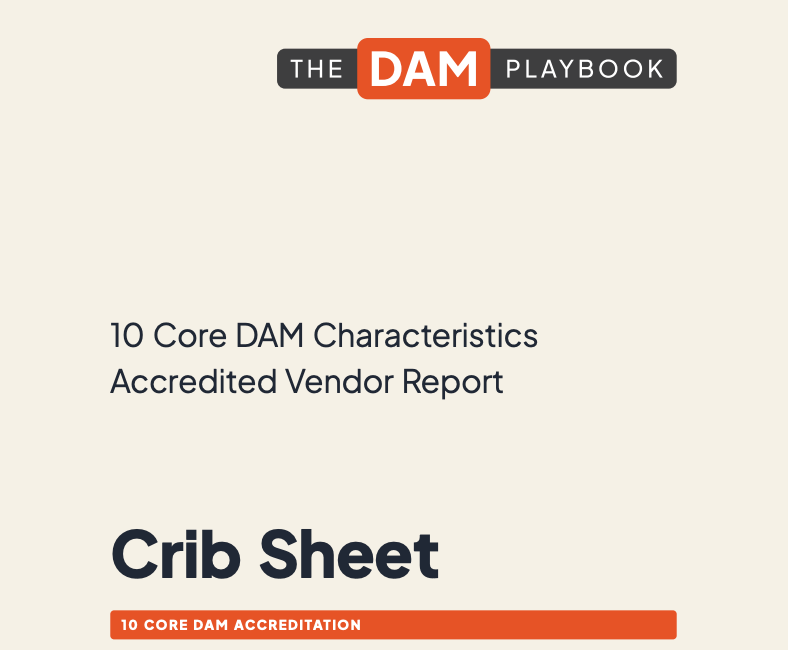Building an AI-Driven Ten Core Characteristics Evaluation and Accreditation Process
As the digital landscape evolves, the importance of effective Digital Asset Management systems cannot be overstated. Organizations across industries rely on DAM systems to manage, store, organize, and distribute their digital assets efficiently. The Ten Core Characteristics framework has long served as a robust standard for evaluating and accrediting DAM vendors. However, as technology advances, so too must our evaluation processes. It is time to build an AI-driven Ten Core Characteristics evaluation and accreditation process to ensure that DAM systems not only meet but exceed industry standards in the digital age.
The Need for an AI-Driven Evaluation Process
The traditional evaluation process, while thorough, is time-consuming and often subjective. It relies heavily on manual assessments, documentation reviews, and live demonstrations, which can introduce variability and human error. By integrating artificial intelligence (AI) into this process, we can achieve a more efficient, accurate, and objective evaluation, ensuring that DAM vendors meet the highest standards of functionality, security, and user experience.
Leveraging AI Across the Ten Core Characteristics
1. Ingest AI can revolutionize the ingest process by automating metadata extraction, categorizing assets, and identifying duplicate files. This not only speeds up the evaluation but also ensures consistency and accuracy.
2. Storage Intelligent storage management using AI can predict future storage needs, optimize resource allocation, and detect potential storage issues before they arise, ensuring DAM systems are both scalable and reliable.
3. Organization AI-driven tagging and categorization streamline asset organization. By dynamically adjusting taxonomies based on content and user behavior, AI ensures that assets are always easy to find and use.
4. Access Control AI can enhance access control by adapting permissions based on user behavior and detecting unusual access patterns that might indicate security breaches, ensuring robust asset security.
5. Asset Management AI can automate lifecycle management, from version control to archival processes, and provide deep insights into asset usage, helping to optimize asset management strategies.
6. Search and Discovery With AI-powered natural language processing and image recognition, search functionalities become more intuitive and accurate. Personalized recommendations based on user behavior further enhance asset discovery.
7. Transformation AI can automate asset transformations and enhance content quality through advanced editing capabilities, ensuring assets are always in the optimal format and quality for their intended use.
8. Distribution AI optimizes content delivery across platforms and automates publishing processes, ensuring efficient and effective distribution of digital assets.
9. Security AI-driven threat detection and compliance monitoring provide an additional layer of security, ensuring assets are protected from unauthorized access and data breaches.
10. Integration AI facilitates seamless integrations with other systems, automating data exchange and workflow processes, and ensuring interoperability with various data formats and protocols.
Implementing the AI-Driven Accreditation Process
To implement an AI-driven Ten Core Characteristics evaluation and accreditation process, we must take the following steps:
Develop AI Models: Create AI models tailored to each of the Ten Core Characteristics, leveraging machine learning algorithms to analyze and evaluate DAM system functionalities.
Automate Data Collection: Implement tools to automatically collect data from DAM systems, including performance metrics, user feedback, and security logs, to provide a comprehensive evaluation.
Continuous Learning: Use machine learning to continuously improve AI models based on new data and evolving industry standards, ensuring the evaluation process remains current and accurate.
User-Friendly Interfaces: Develop intuitive interfaces for DAM vendors and evaluators to interact with the AI system, providing clear insights and actionable feedback.
Transparency and Trust: Ensure transparency in the AI-driven evaluation process by providing detailed reports and explanations of AI decisions, fostering trust among DAM vendors and users.
The Benefits of an AI-Driven Approach
Efficiency: Automating the evaluation process significantly reduces the time and effort required for accreditation, allowing more vendors to be evaluated in a shorter time frame.
Accuracy: AI eliminates human error and subjectivity, ensuring consistent and objective evaluations across all DAM vendors.
Scalability: An AI-driven process can easily scale to accommodate a growing number of DAM vendors and increasingly complex evaluation criteria.
Innovation: By continuously learning and adapting, AI ensures that the evaluation process keeps pace with technological advancements and industry trends.
As we move further into the digital age, it is imperative that our evaluation and accreditation processes evolve alongside our technologies. Building an AI-driven Ten Core Characteristics evaluation and accreditation process is not just a step forward—it is a leap into the future. By embracing AI, we can ensure that DAM systems continue to meet the highest standards of functionality, security, and user experience, driving innovation and excellence in digital asset management.
Current Accredited 10 Core DAM Vendors
Acquia DAM (Widen)
Adobe (AEM)
Aetopia
Apollon
Aprimo
Asset Bank
AssetSERV
Brandfolder
Brandworkz
Bynder
Canto Cumulus
Celum
Censhare AG
Comrads Solutions
DALIM SOFTWARE GmbH
Daminion
Discovery Reply
Elvis Woodwing
EnterMedia
Equilibrium
Eyebase
Fotoware
HyperCMS
IntelligenceBank
Keepeek
MediaBeacon (ESKO)
Mediagraph
MerlinOne
NetX
North Plains Telescope
Nuxeo
OpenText Media Manager
Picturepark
QBank
Razuna
ResourceSpace
Sitecore (Stylelabs)
Veeva
Wave Corporation
Webdam (Bynder)
Wedia
Xinet (NorthPlains)
Ten Core Reports for Specific Departments and Verticals
The Ten Core Characteristics framework is a comprehensive tool used to evaluate Digital Asset Management systems across a range of criteria. These characteristics provide a structured way to assess the capabilities and fit of DAM vendors for specific departments and verticals, ensuring that the selected system aligns with unique business needs and opera…




Brilliant!